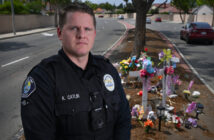Continuing its drive to be as technologically advanced as possible, the Tustin PD recently equipped its officers with body cameras and is in the process of upgrading in-car cameras and computers.
The Tustin City Council approved the new technology last August and the body cameras were rolled out beginning in January, starting with the Traffic Unit.
By the end of summer, all TPD patrol units will be equipped with new dash cams and detachable computers.
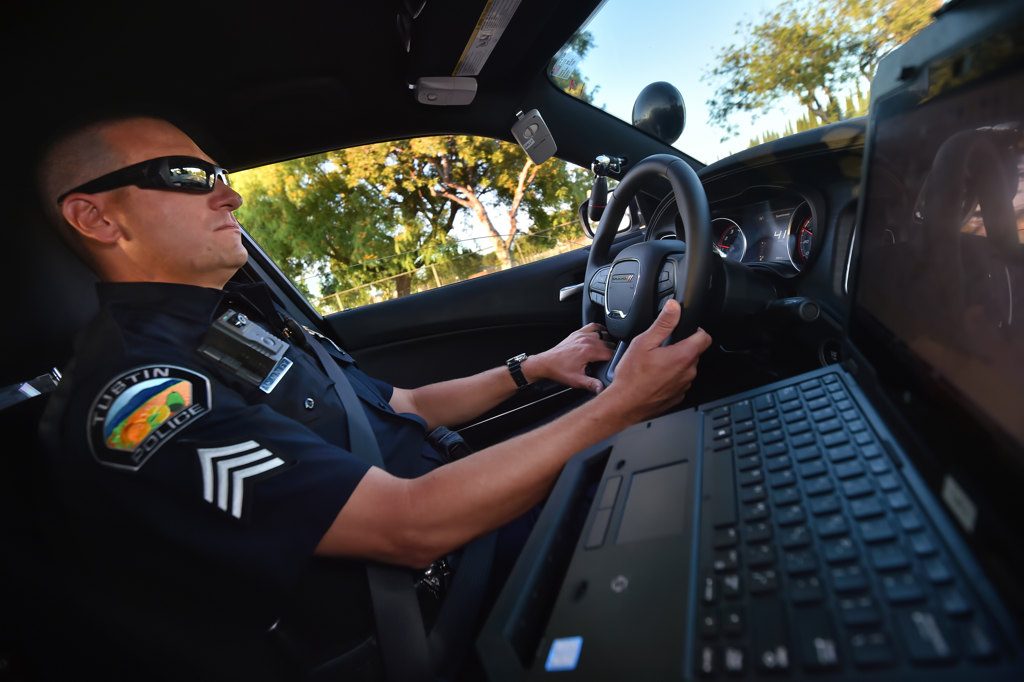
Sgt. Matt Nunley wears one of the department’s new body cameras while out in the field.
Photo by Steven Georges/Behind the Badge OC
The new equipment comes on the heels of another recent technological tool for the TPD called StarChase, a pursuit-mitigation option in which officers deploy a GPS-equipped cylinder that sticks to the back of a car being pursued so officers and dispatchers can track it.
“(Chief Charles Celano) is really big into technology and making sure that we’re using technology to be as effective and efficient as possible,” said Lt. Brian Greene, an administrative lieutenant in the TPD’s Community Policing Bureau. “To do that, we need to equip our personnel with the tools they need to do their jobs.”
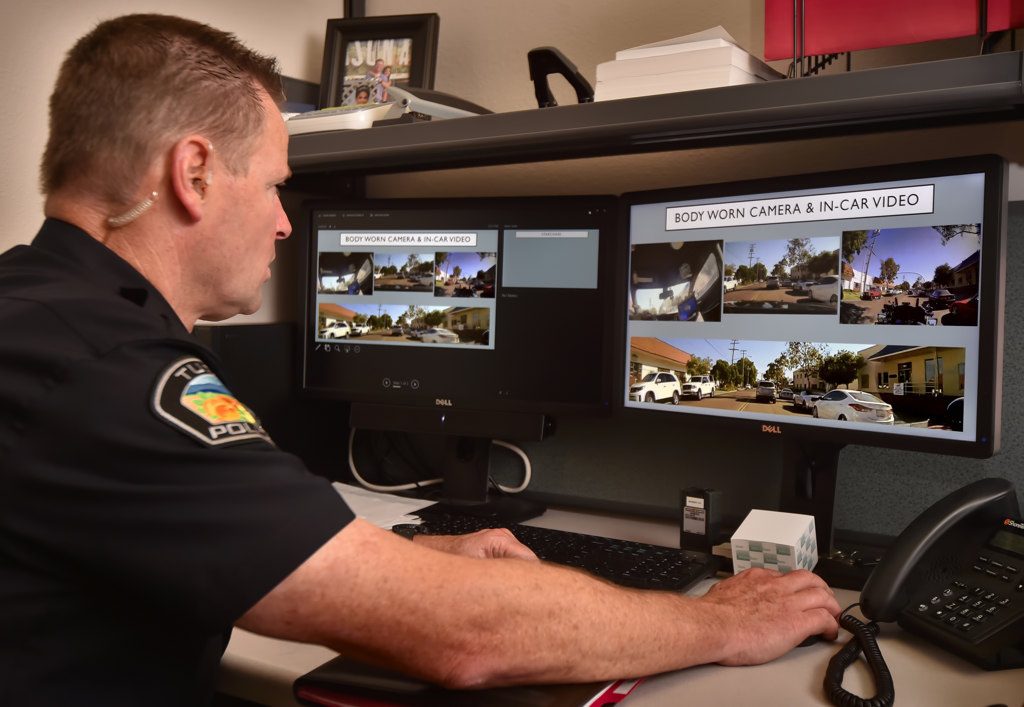
Tustin PD Lt. Brian Greene shows an example of videos that will be captured from the department’s new body cams and in-car cameras that are synced together in time to show a more complete record of an incident.
Photo by Steven Georges/Behind the Badge OC
The latest technology gives the TPD another layer of trust and transparency with the community, Greene said.
“We’re very fortunate here in Tustin to have a great relationship with the community, and we don’t ever want to put that in jeopardy,” he said.
The TPD joins other agencies, such as the Anaheim and Fullerton PDs, in equipping its officers with body cameras. The Huntington Beach PD last year received approval for body cameras, and the La Habra and Santa Ana PDs are implementing them.
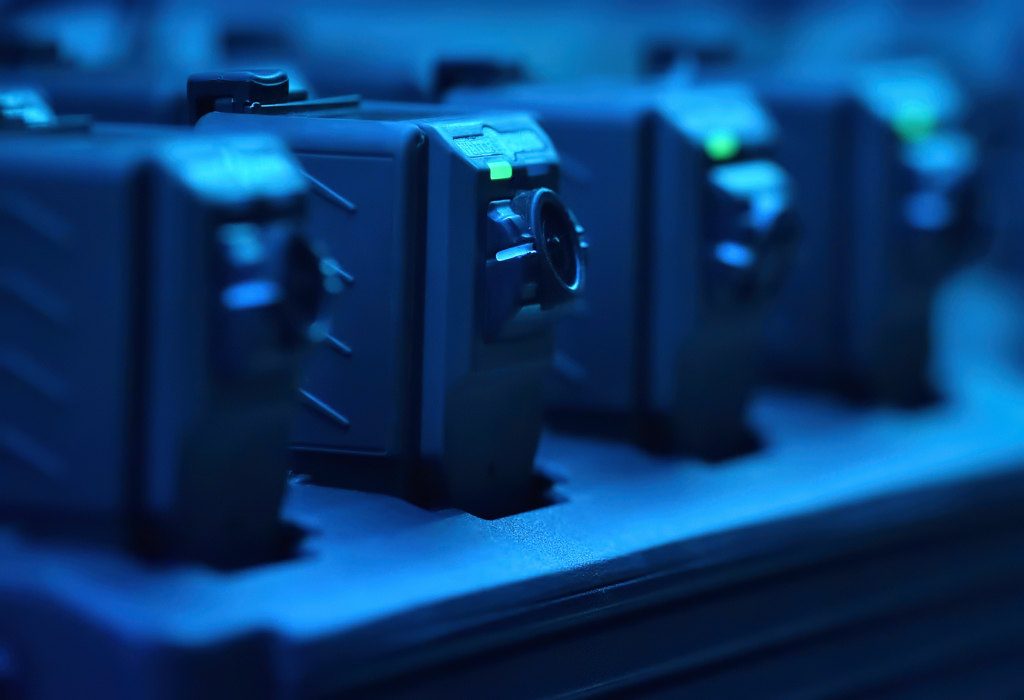
Cameras are docked at the end of a shift to download the day’s videos for archiving and to charge the batteries.
Photo by Steven Georges/Behind the Badge OC
But the TPD, Greene said, is the only agency in O.C. that has both body cameras for the officers and dash cams in the vehicles. Other agencies have opted to do away with dash cams after switching to body cameras, he said.
The upgrades are designed with an eye to the future, said Greene.
“We wanted the latest, greatest technology not only for now, but for a few years down the line,” he said.
Greene led a committee of 18 sworn and professional personnel at the TPD, from officers to dispatchers to records employees, who spent a year-and-a-half before deciding on an integrated body camera/dash cam system manufactured by WatchGuard Technologies Inc. of Seattle.
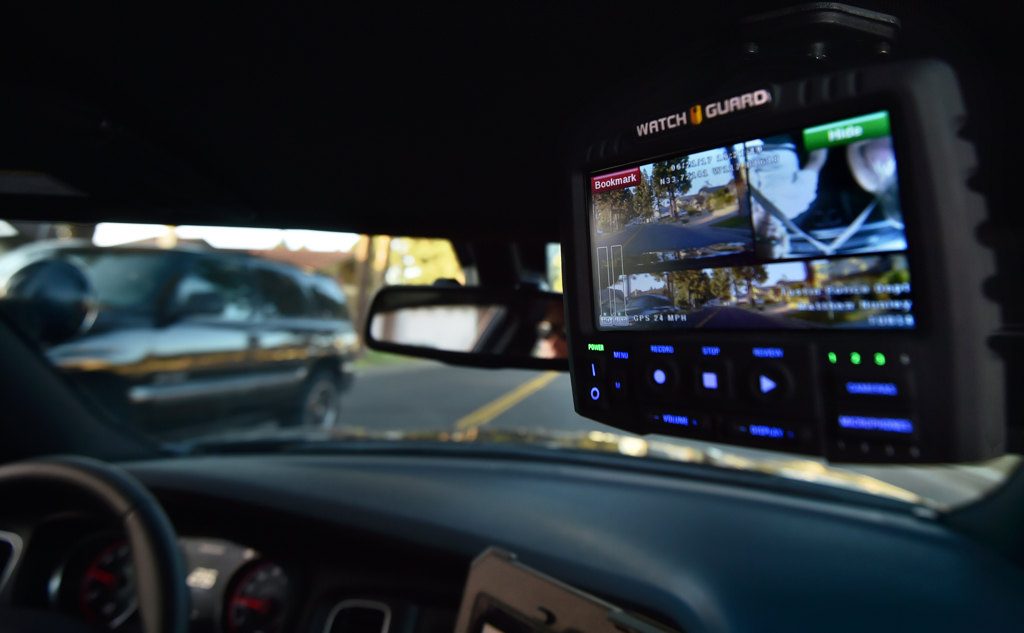
A display inside a Tustin patrol car shows what the body cameras see along with in-car video cameras that are all synced together.
Photo by Steven Georges/Behind the Badge OC
The TPD has new rugged Dell MDCs (mobile data computers) that replace old ones that couldn’t be removed from patrol cars. Now, officers have the option to detach them and work on a report while still on scene at a call.
The four officers and one riding sergeant who make up the TPD’s Motors Unit are particularly pleased with the new body cameras, since their motorcycles previously were equipped only with audio recorders, Greene said.
The new body cameras and dash cams, as well as the new MDCs, are a hit with TPD officers, he said.
“Overwhelmingly, we’ve had a lot of support for them,” Greene said.
Sgt. Matt Nunley, a patrol sergeant for the north part of Tustin, was a member of the committee who worked on the body cameras, dash cams and computers. Nunley said the committee evaluated several different options, but eventually came to a recommendation on the WatchGuard system.
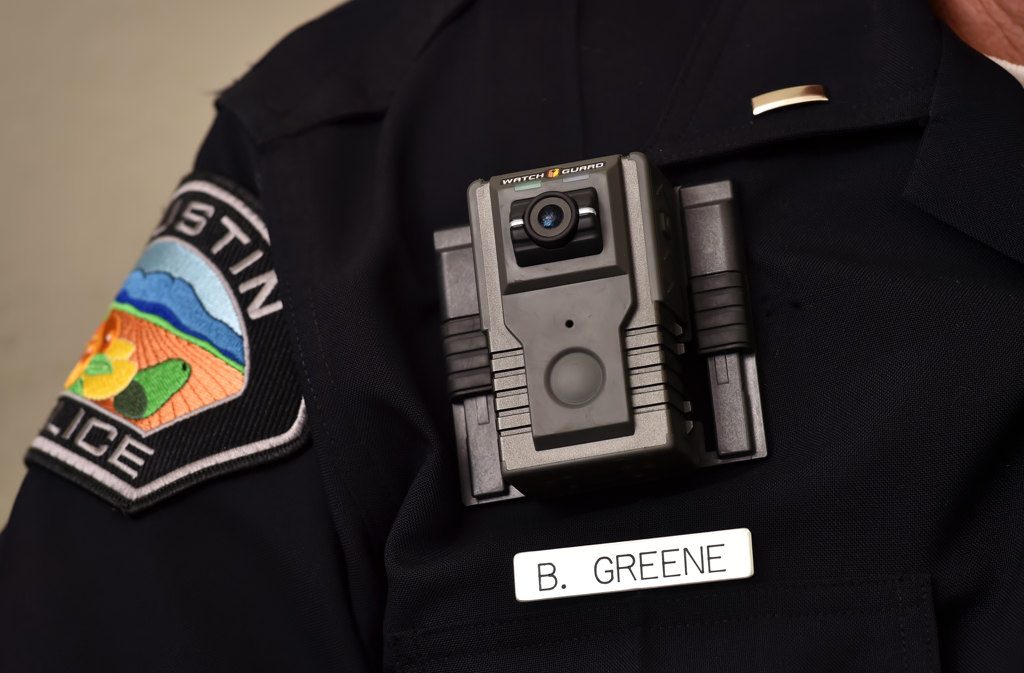
Tustin PD Lt. Brian Greene wears the agency’s new body camera.
Photo by Steven Georges/Behind the Badge OC
“The (body cameras) are especially handy in foot pursuits when officers are away from their cars,” he said. “They help us make accurate documentations on our reports. That’s what the officers like the most: They can write in their reports word for word what happened.”
The new in-car cameras have a panoramic view option that records video of what’s playing out in front of the patrol car, and they also can capture what’s happening in the back seat.
“A lot of times, if we have two suspects in the back, they will make incriminating statements,” Nunley said. “There’s no expectation of privacy in a police car.”
Nunley recently showed how the TPD’s new in-car camera and computer systems work.
He pulled up to a 7 p.m. “suspicious person” call in a residential neighborhood. Other TPD officers were on the scene interviewing two men who had parked on the dead-end street and admitted to smoking marijuana.
Among the other officers on the scene were Officer Diego Gomez, a field training officer, and his trainee, Officer Hector Frias. Both Gomez and Frias praised the body cameras and new patrol car upgrades.
“Nine times out of 10,” Frias said, “when you tell someone everything they say and do is being recorded, they stop talking and the call usually goes smoothly.”
The body cameras and in-car cameras are fully integrated and can be manually activated by an officer, but they also activate automatically in certain situations through predesignated “triggers” that are configurable within the system’s software.
The in-car video system has a 30-second pre-record function. When it’s activated, it provides video of what happened a half-minute before it was turned on. The body cameras have a similar function, but pre-record for 15 seconds.
“Now we can get what’s going on at the point of contact,” Nunley said of the new body cameras and dash cams. “Now we can pretty much get the whole picture and the more views we have, the better.”
 Behind the Badge
Behind the Badge


